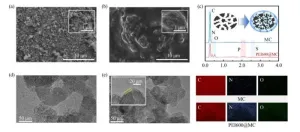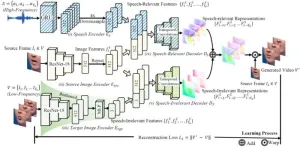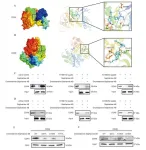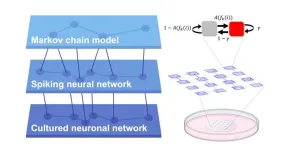(Press-News.org) Sex differences in brain structure are present from birth, research from the Autism Research Centre at the University of Cambridge has shown.
While male brains tended to be greater in volume than female brains, when adjusted for total brain volume, female infants on average had significantly more grey matter, while male infants on average had significantly more white matter in their brains.
Grey matter is made up of neuron cell bodies and dendrites and is responsible for processing and interpreting information, such as sensation, perception, learning, speech, and cognition. White matter is made up of axons, which are long nerve fibres that connect neurons together from different parts of the brain.
Yumnah Khan, a PhD student at the Autism Research Centre, who led the study, said: “Our study settles an age-old question of whether male and female brains differ at birth. We know there are differences in the brains of older children and adults, but our findings show that they are already present in the earliest days of life.
“Because these sex differences are evident so soon after birth, they might in part reflect biological sex differences during prenatal brain development, which then interact with environmental experiences over time to shape further sex differences in the brain.”
One problem that has plagued past research in this area is sample size. The Cambridge team tackled this by analysing data from the Developing Human Connectome Project, where infants receive an MRI brain scan soon after birth. Having over 500 newborn babies in the study means that, statistically, the sample is ideal for detecting sex differences if they are present.
A second problem is whether any observed sex differences could be due to other factors, such as differences in body size. The Cambridge team found that, on average, male infants had significantly larger brain volumes than did females, and this was true even after sex differences in birth weight were taken into account.
After taking this difference in total brain volume into account, at a regional level, females on average showed larger volumes in grey matter areas related to memory and emotional regulation, while males on average had larger volumes in grey matter areas involved in sensory processing and motor control.
The findings of the study, the largest to date to investigate this question, are published in the journal Biology of Sex Differences.
Dr Alex Tsompanidis who supervised the study, said: “This is the largest such study to date, and we took additional factors into account, such as birth weight, to ensure that these differences are specific to the brain and not due to general size differences between the sexes.
“To understand why males and females show differences in their relative grey and white matter volume, we are now studying the conditions of the prenatal environment, using population birth records, as well as in vitro cellular models of the developing brain. This will help us compare the progression of male and female pregnancies and determine if specific biological factors, such as hormones or the placenta, contribute to the differences we see in the brain.”
The researchers stress that the differences between males and females are average differences.
Dr Carrie Allison, Deputy Director of the Autism Research Centre, said: “The differences we see do not apply to all males or all females, but are only seen when you compare groups of males and females together. There is a lot a variation within, and a lot of overlap between, each group.”
Professor Simon Baron-Cohen, Director of the Autism Research Centre, added: “These differences do not imply the brains of males and females are better or worse. It’s just one example of neurodiversity. This research may be helpful in understanding other kinds of neurodiversity, such as the brain in children who are later diagnosed as autistic, since this is diagnosed more often in males.”
The research was funded by Cambridge University Development and Research, Trinity College, Cambridge, the Cambridge Trust, and the Simons Foundation Autism Research Initiative.
Reference
Khan, Y.T., Tsompanidis, A., Radecki, M.A. et al. Sex differences in human brain structure at birth. Biol Sex Differ; 17 Oct 2024; DOI: 10.1186/s13293-024-00657-5
END
Sex differences in brain structure present at birth
2025-01-07
ELSE PRESS RELEASES FROM THIS DATE:
UCLA scientist unlocks early warning signs of adolescent psychosis through genetics
2025-01-07
LOS ANGELES, California, USA, 7 January 2025 - In a comprehensive Genomic Press Interview, Dr. Carrie E. Bearden, Professor of Psychiatry and Biobehavioral Sciences and Psychology at UCLA, shares transformative insights into the neurobiology of psychosis risk in young people. Her work represents a significant advance in understanding how genetic factors and brain development interact to influence mental health outcomes in adolescents.
Growing up in Hawaii, Dr. Bearden's early fascination with mysteries and marine biology evolved into a passionate pursuit of neuroscience's greatest ...
Research reveals unique features of brain cells linked to neurodevelopmental conditions
2025-01-07
7 January 2025, Leuven – Specific brain cells known as layer 5 pyramidal neurons play a vital role in how our brains process information. Research by the team of Prof. Joris de Wit (VIB-KU Leuven) and colleagues highlights the differences between two types of these brain cells —intratelencephalic (IT) neurons and pyramidal tract (PT) neurons—and how these differences may affect their vulnerability to conditions like autism and schizophrenia.
Profiling synapses
Among the neural circuits that let our brain process information, brain cells known as layer 5 pyramidal neurons integrate information from various sources ...
Smarter memory: next-generation RAM with reduced energy consumption
2025-01-07
Osaka, Japan – Numerous memory types for computing devices have emerged in recent years, aiming to overcome the limitations imposed by traditional random access memory (RAM). Magnetoresistive RAM (MRAM) is one such memory type which offers several advantages over conventional RAM, including its non-volatility, high speed, increased storage capacity and enhanced endurance. Although remarkable improvements have been made to MRAM devices, reducing energy consumption during data writing remains a critical challenge.
A study recently published in Advanced Science by researchers from Osaka University proposes a new technology for MRAM ...
Core-membrane microstructured amine-modified mesoporous biochar templated via ZnCl2/KCl for CO2 capture
2025-01-07
In the ongoing battle against climate change, reducing carbon dioxide (CO2) emissions remains a critical challenge. A recent study published in the journal Frontiers in Energy presents a significant breakthrough in CO2 capture technology through the development of a novel biochar material. This research, conducted by a team from Shanghai Jiao Tong University, introduces a core-membrane microstructured amine-modified mesoporous biochar, offering a promising solution for efficient CO2 capture.
The increasing concentration of CO2 in the atmosphere ...
Audio-guided self-supervised learning for disentangled visual speech representations
2025-01-07
Learning visual speech representations from talking face videos is an important problem for several speech-related tasks, such as lip reading, talking face generation, audio-visual speech separation, and so on. The key difficulty lies in tackling speech-irrelevant factors presented in the videos, such as lighting, resolution, viewpoints, head motion, and so on.
To solve the problems, a research team led by Shuang YANG publishes their new research on 15 December 2024 in Frontiers of Computer Science co-published by Higher Education ...
From logs to security: How process analysis is transforming access control
2025-01-07
Researchers at the University of Electro-Communications have developed a groundbreaking framework for improving system security by analyzing business process logs. This framework focuses on ensuring that role-based access control (RBAC) rules-critical to managing who can access specific system resources-are correctly implemented. Noncompliance with these rules, whether due to error or malicious activity, can result in unauthorized access and pose significant risks to organizations.
RBAC is a widely used access control model that relies on predefined roles assigned to users. However, as business processes become more complex, ensuring ...
Dronedarone inhibits the proliferation of esophageal squamous cell carcinoma through the CDK4/CDK6-RB1 axis in vitro and in vivo
2025-01-07
Esophageal squamous cell carcinoma (ESCC) is a severe health threat, being a predominant subtype of esophageal cancer and contributing significantly to cancer-related mortality globally. Despite advancements in combination therapies, patient prognosis remains poor, highlighting an urgent need for novel treatment strategies. In this context, a study explores the potential of dronedarone, an FDA-approved drug, in inhibiting ESCC proliferation through the CDK4/CDK6-RB1 axis, both in vitro and in vivo. The research reveals that dronedarone, ...
Photonic nanojet-regulated soft microalga-robot
2025-01-07
Micro/nanorobots hold exciting prospects for executing different tasks in complex microenvironments due to their small size, high flexibility, controllability, and environmental adaptability. However, traditional rigid micro/nanorobots are still difficult to perform different biomedical tasks in complex and unstructured narrow microenvironments due to their limited flexibility and insufficient deformability. To address this problem, in a new paper published in PhotoniX, a team of scientists led by Professor Hongbao Xin from Institute of Nanophotonics, Jinan University, China, has developed a new soft microalga robot (saBOT).
They innovatively used microalga, ...
How do directional connections shape complex dynamics in neuronal networks?
2025-01-07
Uncovering the relationship between structure (connectivity) and function (neuronal activity) is a fundamental question across many areas of biology. However, investigating this directly in animal brains is challenging because of the immense complexity of their neural connections and the invasive surgeries that are typically needed. Lab-grown neurons with artificially-controlled connections have the possibility of becoming a useful alternative to animal testing, particularly as we learn how to accurately characterize their behaviour.
A research team at Tohoku University used microfluidic devices to reveal how directional connections shape the complex dynamics ...
Drug-resistant hookworms put pets and people at risk
2025-01-07
Canine hookworms are becoming increasingly resistant to drugs across Australia, according to new research.
Scientists at The University of Queensland and The University of Sydney have identified widespread resistance to benzimidazole-based dewormers which are commonly used to treat gastrointestinal parasites in dogs.
Dr Swaid Abdullah from UQ’s School of Veterinary Science said almost 70 per cent of the hookworm samples studied showed genetic mutations that can cause drug resistance.
“This is a big problem, as hookworm infections ...









